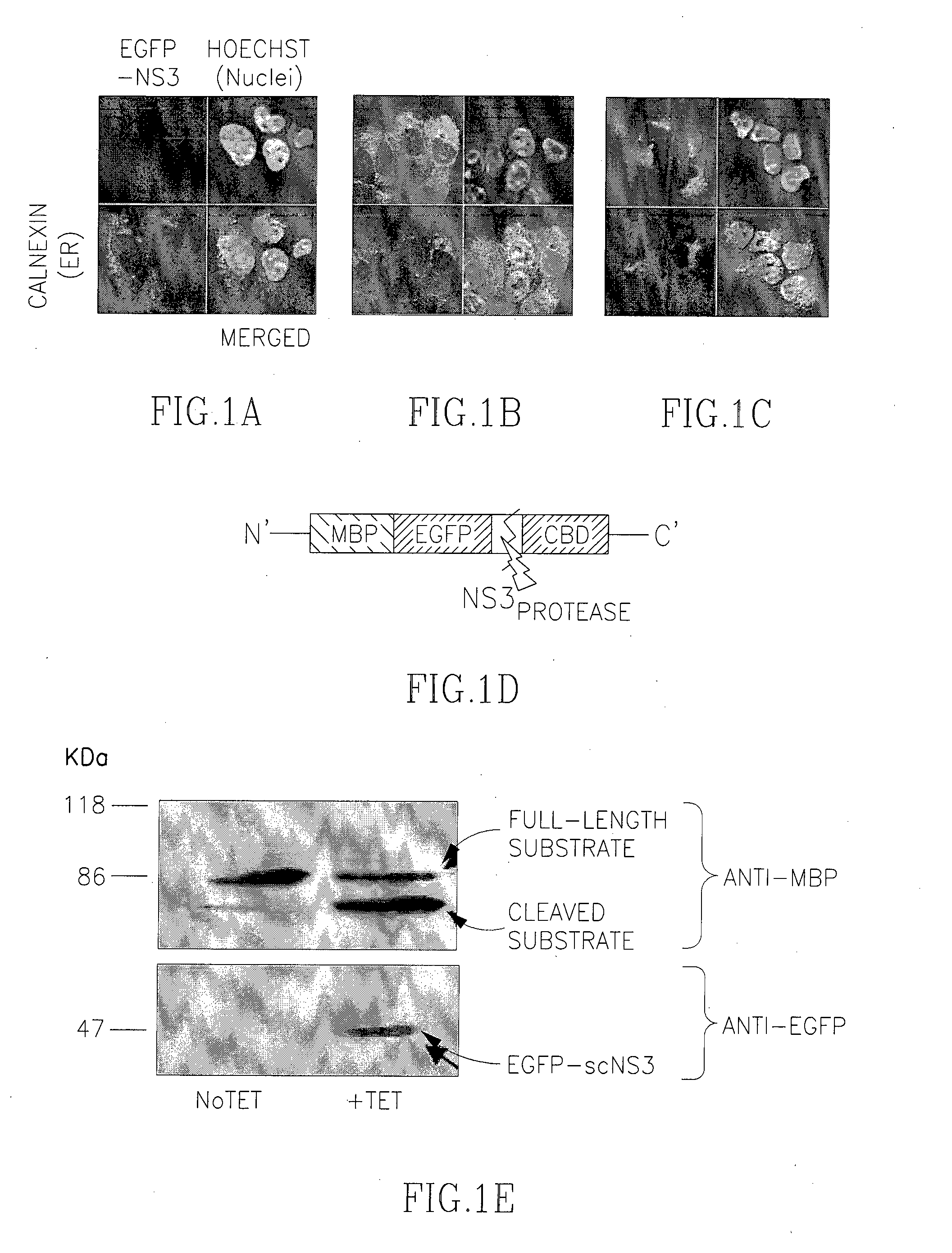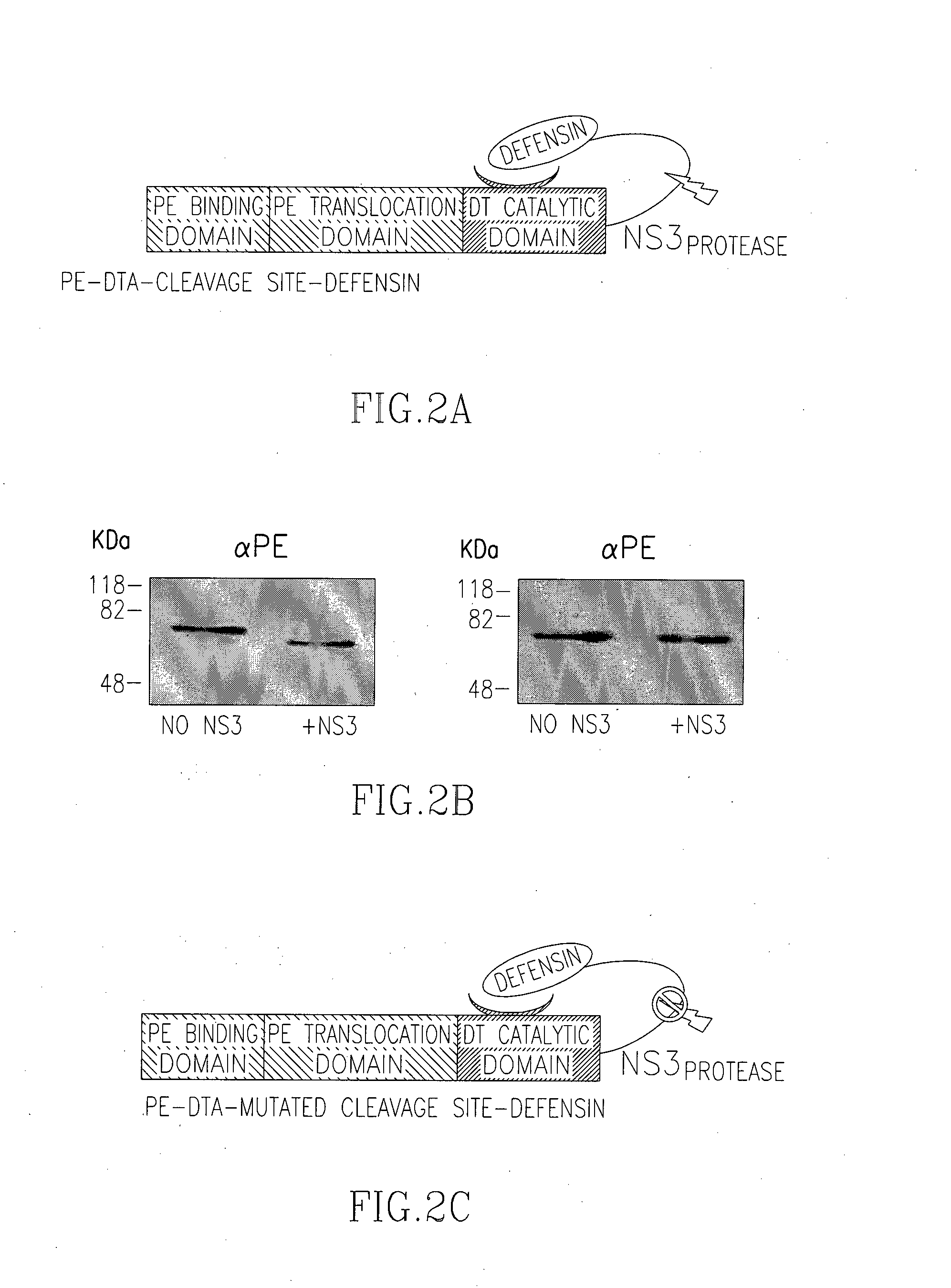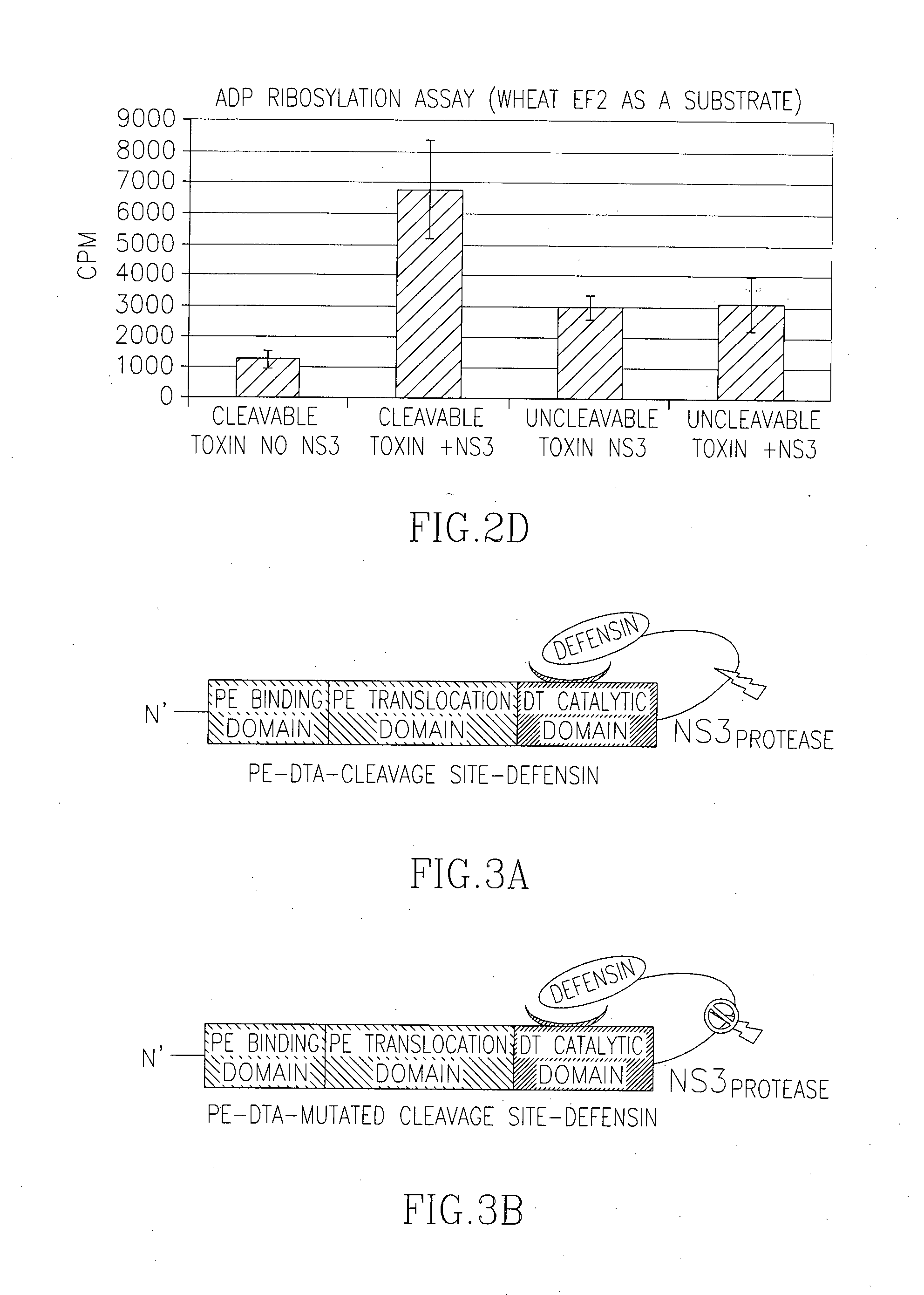Activatable toxin complexes comprising a cleavable inhibitory peptide
a toxin complex and inhibitory peptide technology, applied in the direction of peptide/protein ingredients, antibody medical ingredients, peptide sources, etc., can solve the problems of not yet available protective vaccines for hcv, failure to eliminate infection in nearly 50% of infected subjects, etc., to block the multiplication and spread of infectious organisms
- Summary
- Abstract
- Description
- Claims
- Application Information
AI Technical Summary
Benefits of technology
Problems solved by technology
Method used
Image
Examples
example 1
Establishment of NS3 Protease Expressing Model Cell System
[0212]For the purpose of establishing a model cell line expressing the HCV NS3 protease, we constructed a fusion protein between the previously described single chain construct NS4A-NS3 (single-chain NS3; scNS3) (Gal-Tanamy et al., 2005) in which a short synthetic peptide encompassing residues 21-34 of NS4A (of the 1b HCV genotype) was linked to the N terminus of the NS3 protease domain (Dimasi et al., 1998; Taremi et al., 1998; Berdichevsky et al., 2003), and enhanced green fluorescence protein (EGFP). In addition, another construct was made, comprising a fusion of EGFP and the full length NS3 (protease / RNA helicase) followed by full length NS4A (of the 1a HCV genotype) (Frelin et al., 2003). As opposed to EGFP-scNS3, which is predicted to be a soluble cytoplasmic or nucleocytoplasmic protein; the EGFP-full length NS3 (which strongly interacts with the full length NS4A following auto-cleavage) is expected to be associated wi...
example 2
Construction of a Diphtheria Toxin-Based Zymoxin
[0215]The toxin-substrate interaction model predicts that an intimate interaction between DTA and its intracellular target elongation factor 2 resides in the C terminal portion of the toxin (Jorgensen et al., 2005). The present inventors have now fused human alpha-defensin 1 (HNP 1) to the C-terminus of DTA, preceded by the 10 amino acid minimal NS3 cleavage sequence (P6-P4′) from HCV (genotype 1b / 1a) NS5A / B site (referred as “cleavage site”) and a flexible linker of 15 amino acid rich in serine and glycine residues. This construct was then fused in its N-terminus to the binding and translocation domains of Pseudomonas exotoxin A (PE) in order to enable internalization and trafficking to the cytosol of mammalian cells, as the natural binding and translocation domains of the diphtheria toxin, which are positioned to the C-terminus of the wild type toxin, were substituted by the HNP1 polypeptide. In addition, a 6×His tag followed by a KD...
example 3
DTA-Based Zymoxin Enzymatic Activity is Elevated Following NS3 Protease Cleavage
[0216]In order to evaluate the susceptibility of the constructs described in Example 2 to cleavage by the NS3 protease and to evaluate the influence of such cleavage on their ADP-ribosylation activity, an in vitro cleavage reaction was carried out by incubating the chimeric toxins with recombinant MBP-scNS3 fusion produced in E. coli (Gal-Tanamy et al., 2005), followed by an ADP-ribosylation activity assay using wheat germ extract as a source of elongation factor 2 (Collier and Kandel, 1971; Hwang et al., 1987). A schematic representation of the PE-DTA chimeric toxins, the in vitro cleavage products and the ADP-ribosylation assay results are shown in FIG. 2. As shown, incubation of the toxin “PE-DTA-cleavage site-defensin” with the recombinant protease resulted in a complete cleavage of the chimeric toxin that appeared as a lower weight product in immunoblot assay using anti-PE antibodies (FIG. 2B-upper ...
PUM
| Property | Measurement | Unit |
|---|---|---|
| Composition | aaaaa | aaaaa |
| Inhibition | aaaaa | aaaaa |
Abstract
Description
Claims
Application Information
 Login to View More
Login to View More - R&D
- Intellectual Property
- Life Sciences
- Materials
- Tech Scout
- Unparalleled Data Quality
- Higher Quality Content
- 60% Fewer Hallucinations
Browse by: Latest US Patents, China's latest patents, Technical Efficacy Thesaurus, Application Domain, Technology Topic, Popular Technical Reports.
© 2025 PatSnap. All rights reserved.Legal|Privacy policy|Modern Slavery Act Transparency Statement|Sitemap|About US| Contact US: help@patsnap.com



